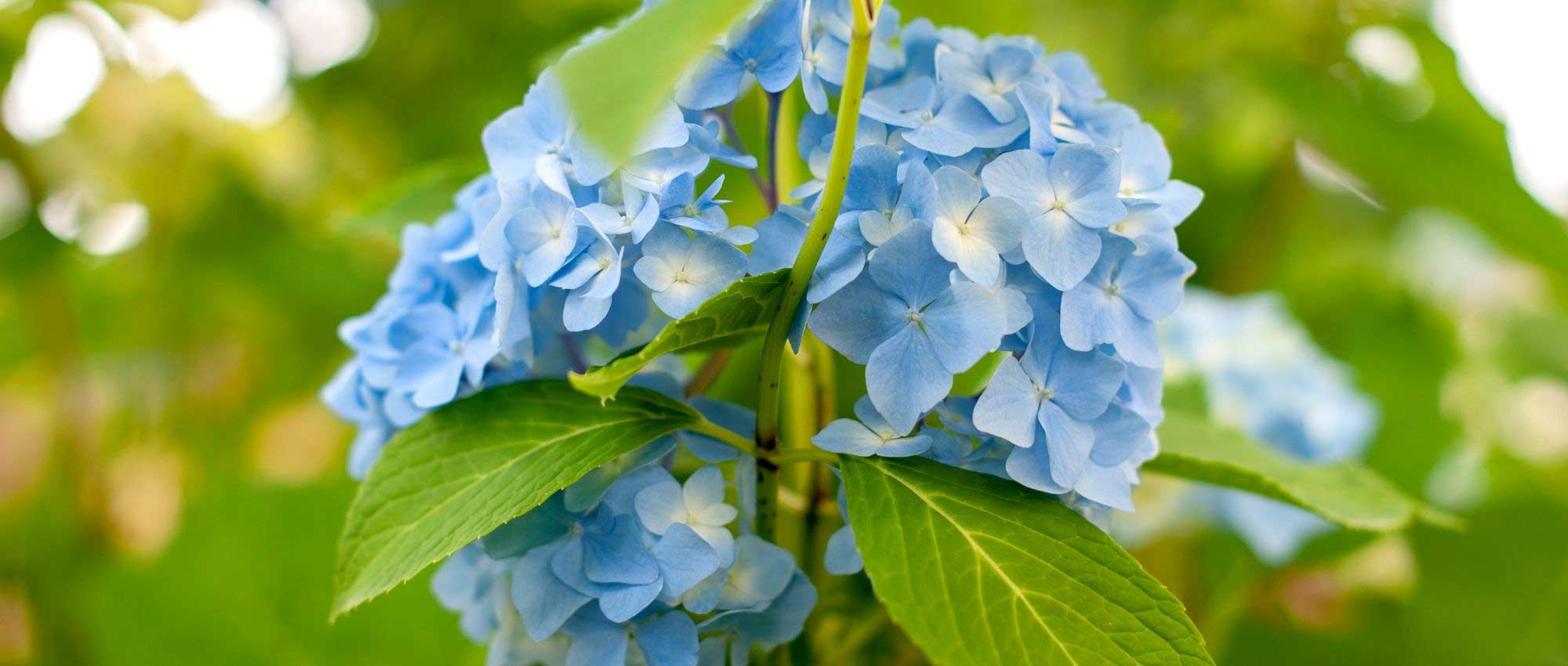
Hydrangea: 7 ideas to pair it with
depending on the style of your garden
Contents
Hydrangeas are bushes native to Asia or North America and generally form wide, bushy clumps with large leaves. They are prized for their dense, generous inflorescences, most often spherical, in shades of pink, blue, mauve or white… Depending on variety, colours can be more vivid, more delicate or more unusual, some producing flowers with an unexpected colour combination! Flowering lasts a long time and takes place between June and September. Hydrangeas also have generous, highly decorative foliage, with great diversity among species. The most common are Hydrangea macrophylla, bearing large spherical or rounded inflorescences, but cultivated forms also include Hydrangea paniculata, Hydrangea serrata, Hydrangea quercifolia… There are even climbing hydrangeas.
Here we reveal all our ideas for pairing them in the garden to create harmonious scenes!
To create a white flower bed
Use hydrangeas to create a white border that, although understated, will be synonymous with refinement, purity and delicacy. To achieve this atmosphere, choose Hydrangea quercifolia, which offers finely cut, very decorative foliage and white inflorescences in panicles. Plant alongside it superb Epilobium angustifolium ‘Album’! It bears elegant upright clusters made up of white flowers. In a similar style, Veronicastrum virginicum ‘Album’ carries long, slender flower spikes of pure white, adding strong verticality to the garden. You can also include gypsophila, whose multitude of small flowers evoke a light, very soft haze. For a more imposing flowering, we recommend pairing them with Phlox paniculata (for example ‘Fujiyama’ or ‘David’), which bear star-shaped, five-petalled flowers gathered in large panicles at the top of the stems. They have the advantage of being scented and melliferous! Also consider Penstemon ‘White Bedder’ and Centranthus ruber ‘Albus’, the white form of garden valerian. You can also add foliage variegated with white, such as hostas, etc. All these plants will give you a garden that is both understated and chic!

Campanula lactiflora ‘Alba’, Hydrangea quercifolia (photo Anne Norman), Phlox paniculata ‘Fujiyama’ (photo Dominicus Johannes Bergsma), Veronicastrum virginicum ‘Album’, Gypsophila paniculata ‘Summer Sparkles’, Penstemon digitalis (photo Eric Hunt)
Read also
Hydrangeas: how to choose them?In a cottage garden
With their generous flowering, often in pastel shades, and their abundant foliage, hydrangeas fit easily into cottage gardens. This type of English garden will delight with its fresh, verdant feel! It offers a profusion of flowers and foliage, and is ideal particularly for highlighting an old stone house or a timber-framed house. We recommend choosing a blue-flowering variety, such as Hydrangea macrophylla ‘Nikko Blue’. Plant alongside hardy geraniums, delphiniums, campanulas, nepeta, sages… Discover Achillea ptarmica ‘The Pearl’, whose double white flowers form small pompom-like balls. Favour plants with exuberant foliage: Cynara cardunculus, Petasites, Melianthus, Acanthes… and let their leaves spill over borders to create a sense of plant abundance and luxuriance. Your garden will thus have a very lively aspect! Also consider delphiniums, which offer tall erect flower spikes: see particularly the variety ‘Highlander Cha Cha’, which bears double flowers with many petals in mauve–lilac. Its flowering is incredibly soft and romantic! You can plant beside it the splendid Polemonium caeruleum! It has graceful, finely divided foliage in a lovely green, as well as small blue or white flowers depending on variety. Feel free to plant hardy geraniums at the front of the border, such as the variety ‘Rozanne’. They will perfectly complement the flowering of sage Salvia nemorosa. You can include some vegetable and herb plants in your borders, as a cottage garden is also a productive garden!
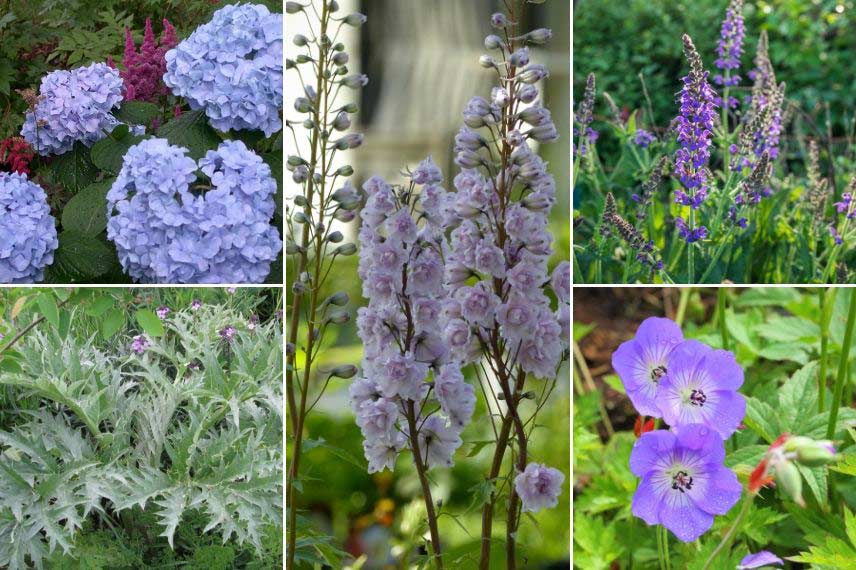
Hydrangea macrophylla ‘Nikko Blue’ (photo Leewrighton), Cynara cardunculus (photo peganum), Delphinium ‘Highlander Cha Cha’, Salvia ‘Mainacht’ (photo F.D. Richards), Geranium ‘Rozanne’ (photo Dominicus Johannes Bergsma)
Discover other Hydrangeas
View all →Available in 2 sizes
Available in 1 sizes
Available in 1 sizes
Available in 2 sizes
Available in 1 sizes
Available in 1 sizes
Available in 2 sizes
Available in 1 sizes
Available in 2 sizes
Available in 2 sizes
In a chic, modern garden
Hydrangeas fit very well into city gardens, creating a chic, modern atmosphere. You can choose Hydrangea arborescens ‘Annabelle’. Integrate structural elements, such as topiary and boxwood edging, for example. Create a garden that prioritises decorative foliage over flowering, to produce a fresh, graphic green setting. We recommend Hosta ‘Stiletto’, as well as the Asian fern Athyrium niponicum. Also consider grasses, such as Stipa pennata, ideal for adding a great sense of lightness! You can install a large rectangular planter, longer than it is wide, in which you will plant bamboo or horsetails. Their vertical stems make them very structural plants, prized for their exotic, modern style. For bushes, choose Choisya ternata, also called Mexican orange, together with Pittosporum and Ligustrum japonicum ‘Texanum’! As a border edging to define beds, you can use Ophiopogons, small perennial plants with fine, linear leaves. Regarding flowering, opt for understated, delicate blooms: consider, for example, agapanthus ‘Black Magic’, which produces superb spherical inflorescences of a very dark blue, almost black.

Scene with Hydrangea ‘Annabelle’, boxwood, Betula, Trachycarpus fortunei (photo Clive Nichols – MAP – landscape designer: Sallis Chandler), Choisya ternata ‘Aztec Pearl’, Agapanthus ‘Black Magic’, Athyrium niponicum ‘Pewter Lace’, Hosta ‘Stiletto’
Read also
How to grow hydrangeas?In a woodland garden with ferns and shade-loving plants
Although Hydrangea paniculata enjoy sun, that is not the case for Hydrangea involucrata, which prefer shady positions. You can easily use them to create a cool, verdant woodland garden. This space will become a peaceful haven with a very restorative atmosphere. We recommend incorporating hostas and Brunnera macrophylla for their decorative foliage! Also discover Paris polyphylla, which bears beautiful whorled leaves. Hydrangeas are also perfect for accompanying the flowering of foxgloves, particularly purple foxglove, which produces attractive flower spikes composed of tubular flowers in a soft, luminous pink‑purple hue. It will ensure a very natural, wild look! Also enjoy the superb Geranium nodosum, which offers lovely small mauve flowers and soft green leaves.
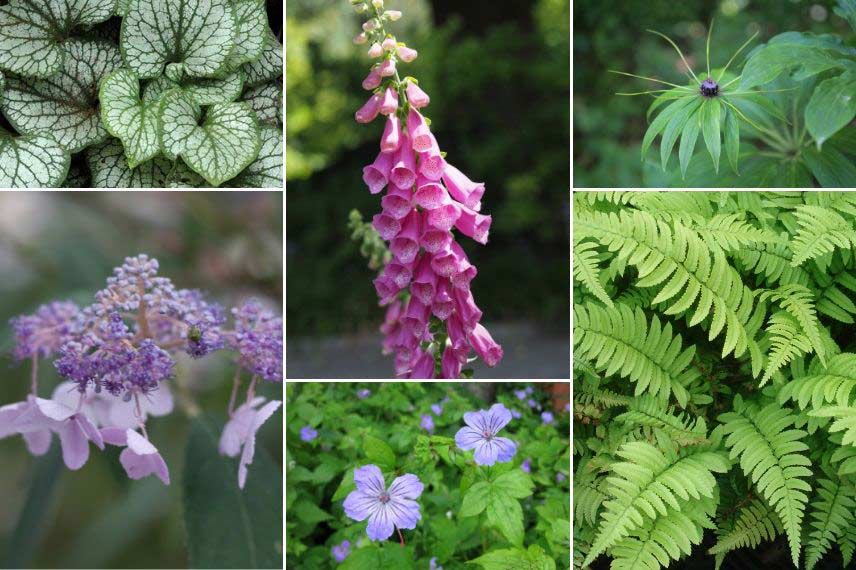
Brunnera ‘Jack Frost’, Hydrangea involucrata (photo: Denis Prévôt), Digitalis purpurea, Geranium nodosum, Paris polyphylla, Dryopteris cycadina
With perennials bearing very colourful flowers
Make the most of Hydrangea paniculata to create a colourful bed in full sun. We particularly recommend variety Hydrangea paniculata ‘Diamant Rouge’, which bears dense flower heads, initially white before quickly turning an intense red. We suggest planting Rudbeckias alongside it; their lovely yellow flowers will add brightness. Add hardy geraniums, Echinacea and Achillea. Also enjoy colourful flowering of Gladioli: they come in a wide range of varieties, often in bright, vivid colours, leaving you spoiled for choice in shades and hues. Nothing beats grasses such as Pennisetum to enhance these flowering displays and lighten the bed! At the back of the bed, alongside Hydrangea paniculata, include other bushes such as Lagerstroemia and oleanders.
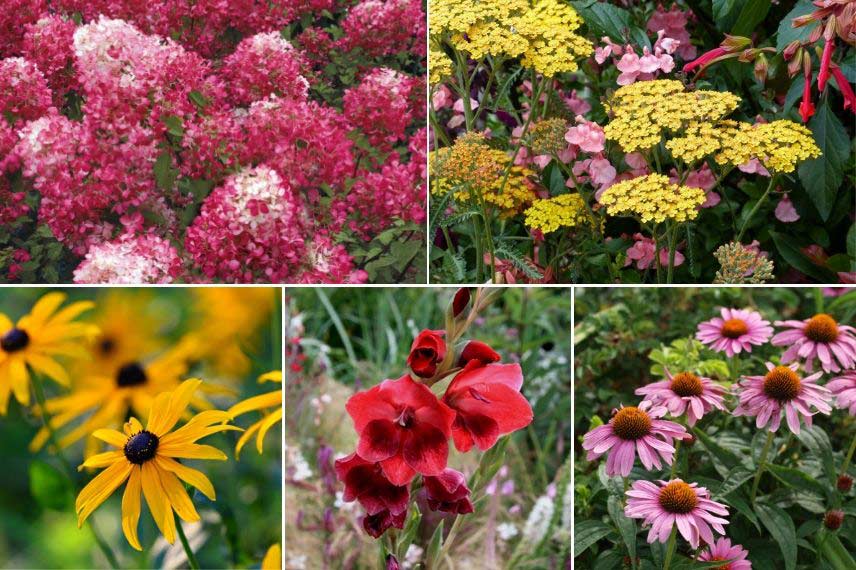
Hydrangea paniculata ‘Diamant Rouge’, Achillea ‘Terracotta’ and Salvia ‘Salmon Dance’, Rudbeckia, Gladiolus papilio ‘Ruby Free’, Echinacea purpurea (photo F.D. Richards)
For a very romantic garden!
Hydrangeas offer opulent, generous flowering, with rounded shapes and soft hues. They help create a romantic, delicate atmosphere. We particularly recommend Hydrangea macrophylla ‘You and Me Romance’, which bears splendid pale pink flowers. What would a romantic garden be without the delicate flowering of a rose? Whether shrub or climbing, its elegant, scented flowers are ideal in this type of garden! Plant alongside these hydrangeas and roses some Japanese anemones, perennials that bear white or pink flowers with yellow centres. You can also pair them with flower spikes of foxgloves, the airy flowering of gypsophila, and the very elegant floral spikes of Veronicastrum virginicum… Enjoy the astrantias, which offer tiny, incredibly delicate flowers in star-shaped umbels, in pale pinkish-white tones! Also consider adding plants with silvery foliage, such as the deeply cut foliage of Artemisia stelleriana ‘Silver Brocade’. It will add a lot of softness to the garden. You can also add lilies, such as regal lily Lilium regale ‘Album’, which produces large, very elegant flowers! If you have an arbour, pergola or trellis, plant a clematis or common jasmine at its base.
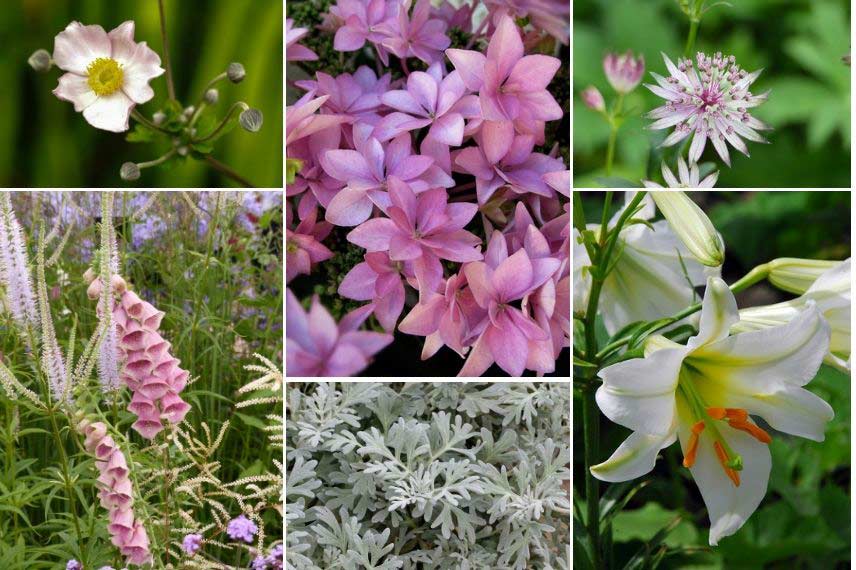
Japanese anemone ‘Robustissima’ (photo Thomas), Digitalis mertonensis, Aruncus ‘Horatio’ and Veronicastrum virginicum ‘Lavendelturm’, Hydrangea macrophylla ‘You and Me Romance’, Artemisia stelleriana ‘Silver Brocade’, Astrantia major ‘Ruby Star’ and Lilium regale ‘Album’
For an Asian-style garden!
Choose Hydrangea serrata, native to Japan, and use it to compose an Asian-inspired garden. It thrives in partial shade, in a relatively cool setting, and prefers humus-bearing, non-calcareous soils. If you’re lucky enough to have a small pond, use it as the centrepiece for an Asian garden. You can also create a mineral setting with rocks and a gravel area where you can rake patterns (waves, ripples…). Incorporate Japanese maples: these bushes are remarkable for their elegant, highly graphic silhouette and their finely divided foliage, turning beautiful shades of red in autumn. You can plant on outer areas of the garden bamboos to close off the space and create a closed environment. Also plant a few cloud-pruned pines (niwaki). Also enjoy the superb foliage of Ginkgo biloba. You can also create beds by combining ferns, ferns, Arisaema, Hakonechloa macra, Astilboides tabularis, Rodgersia… Also consider Helxine, which forms a superb green tapetum, very uniform and moss-like, highlighting the natural contours of the ground.

Hydrangea serrata ‘Kiyosumi’, Acer palmatum ‘Butterfly’, Ginkgo biloba (photo Ladislav Luppa), Phyllostachys nigra, Polystichum polyblepharum
- Subscribe!
- Contents
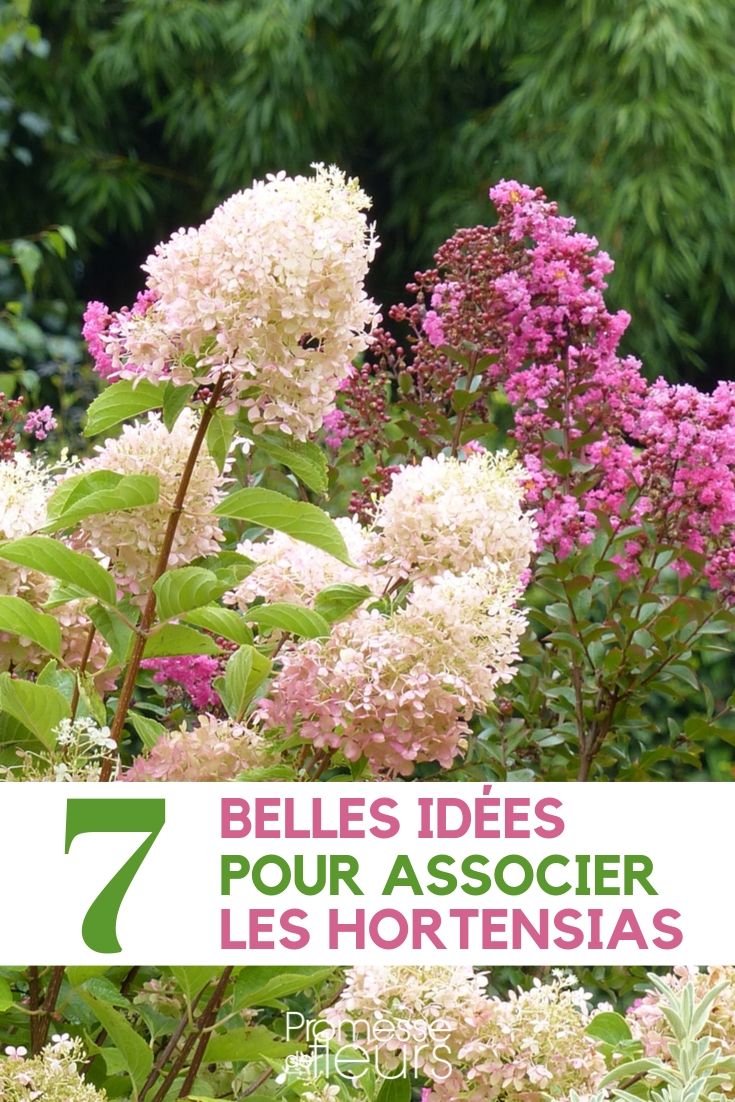































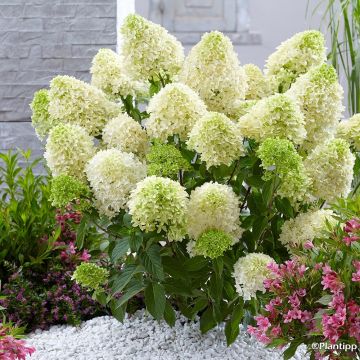
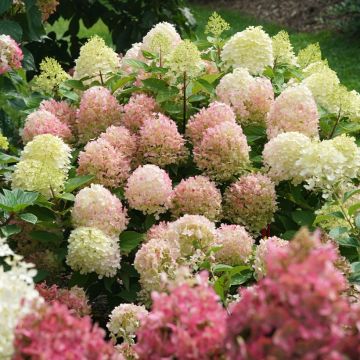
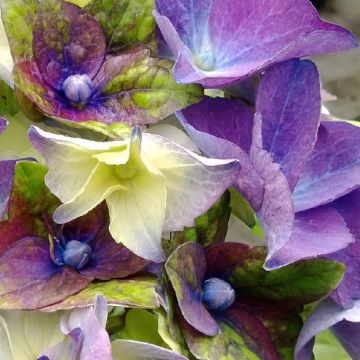
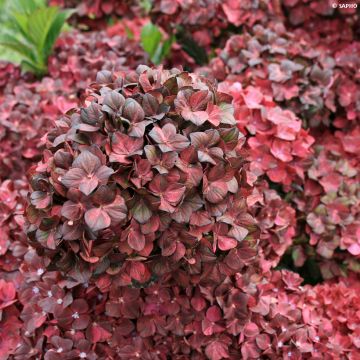
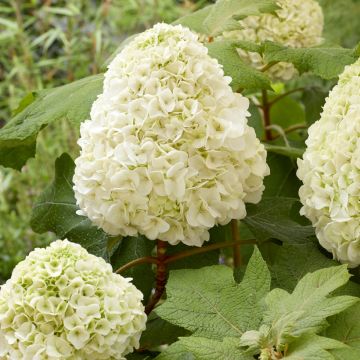
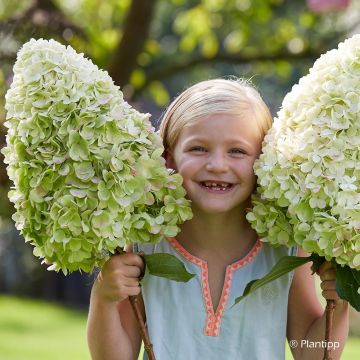

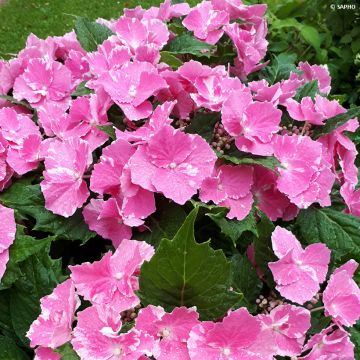
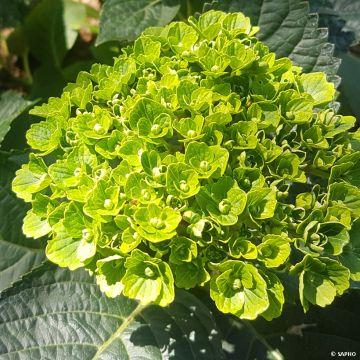
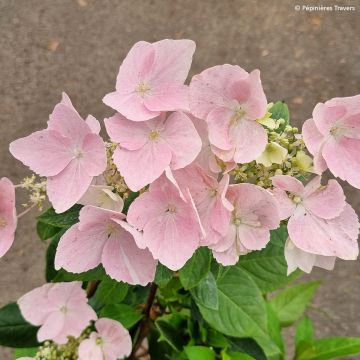
Comments